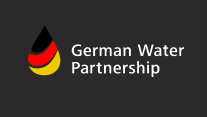Getting active
Phase 2
Building and formalizing
Phase 2 is geared toward consolidating the system of stakeholder collaboration and formalizing stakeholders’ commitment to change. Initial structures are developed, project teams defined and regular meetings planned. This usually leads to agreements – the signing of a contract, a Memorandum of Understanding (MoU), a project plan or a public address in the interest of the change endeavor. With an official event, and an agreed–upon, written document, the Stakeholder Dialogue officially comes to life.
The structure for the Stakeholder Dialogue needs to offer a sufficient degree of ‘process safety’ in an otherwise unpredictable and complex environment: contribution, roles and allocation of work as well as communication and process designs need to be agreed upon jointly. It is crucial to strengthen the work of stakeholders in the initial Container (the core group of initiators holding the intention for change). Commitment needs to be built beyond the initiators and complemented by a more formalized structure for implementation. Like this the capacity of the initiative to learn and communicate is enhanced, and thus is the ability to solve difficulties.
Expected results of Phase 2
Depending on the form and purpose of the Stakeholder Dialogue, anything that shows commitment and gives structure to move forward, e.g.
- Recommendation and clarity on the use of Stakeholder Dialogues
- Agreements to collaborate
- Project or activity plans
- Agreements on implementation procedures
- Formal structures to steer the process (e.g. committees, expert working groups, etc.)
How to clarify goals and resources?
How to plan the future together?
How to consolidate agreements and establish structures?
Do you want to check if your project has covered the most important aspects of Phase 2? Our tool Dialogic Change Model Phase 2 will help you assess the progress of your Stakeholder Dialogue and give recommendations on what needs to be done to step into the next phase of engagement.




